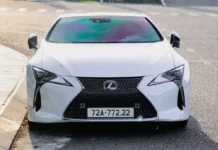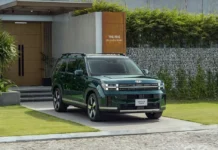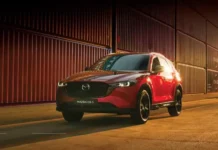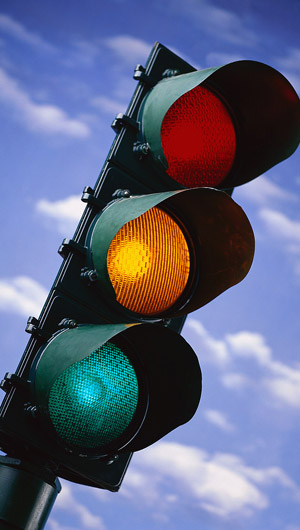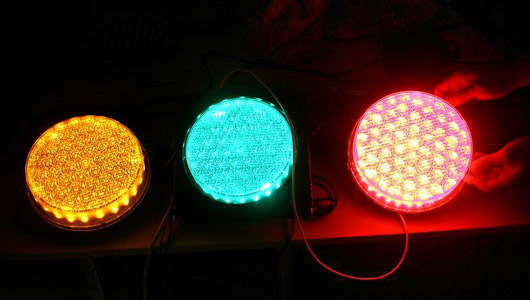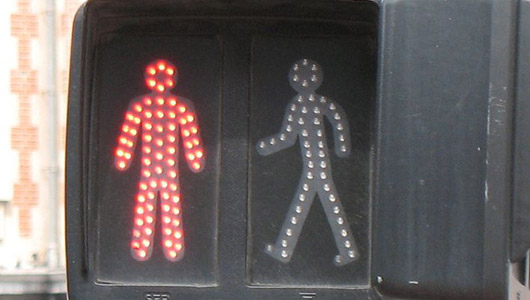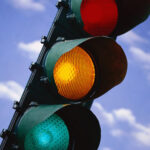Traffic lights, also known as signal lights, are devices that are used to regulate traffic at intersections where there is a high volume of vehicles. These devices are crucial as they ensure the safety of vehicles and help to reduce traffic congestion during peak hours. Traffic lights can be found in the center of intersections or on the sidewalks and can be operated automatically or controlled by traffic police. They play a vital role in maintaining the flow of traffic and preventing accidents.
History
Originally Designed for Trains
Traffic lights were initially designed for trains before they were used for cars. They were first illuminated using gas and later switched to electricity after 43 years. However, even with the use of electricity, they still required human controllers until they were fully automated in 1950. In the beginning, traffic signals did not have a yellow light, and instead, a bell would ring to signal a change in the lights.
The history of traffic lights dates back to October 1868 when a system was installed near the British Parliament building in London. This system was originally designed to signal passing trains and consisted of two lights on an arm of a pole: one red and one green, which were used during the nighttime. The red light indicated a stop, while the green light meant go.
In August 1914, the Traffic Signal Company was established in the United States, responsible for installing traffic lights at intersections in Ohio. At that time, these traffic lights didn’t have a yellow light, so when transitioning between states, a police officer would sound a horn to alert the drivers.
Three-color Traffic Lights (1920-present)
In 1920, traffic lights were upgraded to include three colors: green, red, and yellow. The invention of the three-color traffic lights is credited to police officer William Potts from Detroit. However, in 1923, Garrett Morgan was awarded the invention of traffic signal lights, even though he was not directly responsible for the modern traffic light revolution.
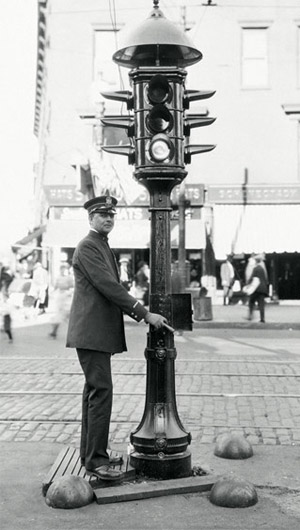
Morgan created his invention in response to the high number of accidents on American roads during that time. He believed that there needed to be a standardized and efficient signaling system. After conducting extensive research, he designed a T-shaped pole with signals displaying “stop,” “go,” and “stop in all directions.”
When the “stop in all directions” signal is activated, pedestrians are allowed to cross the road. However, the system still required human operators even after its introduction. In New York City alone, more than 100 police officers had to work 16-hour shifts, resulting in a total annual salary of $250,000 USD. To overcome these challenges, engineers were tasked with developing an automated signaling system. However, it took almost 20 years for the dream of police officers to become a reality.
In 1950, red and green traffic lights were widely used in Canada and quickly spread worldwide. Nowadays, modern traffic light systems are much more advanced and can include features such as capturing images of vehicles running red lights. Furthermore, many countries have introduced interesting inventions, such as the four-stage traffic lights in the UK, New Zealand, Finland, etc. These lights transition from red to red and yellow, then to green before returning to yellow. The red and yellow state serves as an alert to drivers that the green light will soon appear for a very short period of time.
In Europe, traffic lights with countdown timers have been introduced.
Operating Principle
Traffic lights are designed to function throughout the day, but at midnight (12 a.m.), they switch to flashing yellow or stop working entirely. During the flashing yellow phase, vehicles are allowed to pass, and pedestrians are permitted to cross the road. At 6 a.m. the next day, the traffic lights return to normal operation. However, at certain busy intersections, the traffic lights can operate 24/7 without a flashing yellow phase. When functioning, traffic lights typically follow the sequence of green, yellow, and red. After a specified duration, the lights switch back to green. In some intersections, the yellow light turns on after the red light.
Types of Traffic Lights and Their Meanings
Three-color Lights (for Vehicles)
Three-color traffic lights include green, yellow, and red lights and serve the following purposes:
• Red: When facing a red light, all vehicles (except for right-turning vehicles) must come to a complete stop before the stop line. Pedestrians, however, are allowed to cross.
• Green: When facing a green light, vehicles are allowed to proceed with caution. Pedestrians are not permitted to cross.
• Yellow: The yellow light indicates a transition in the signal.
When the yellow light follows the green light, it serves as a warning to prepare to stop. Vehicles must stop before the stop line as the red light will soon appear. If a vehicle has already passed the stop line, it must quickly clear the intersection.
If the yellow light follows the red light, it indicates a signal for vehicles to prepare to go. Drivers can either proceed or prepare to go as the green light will soon appear.
When the yellow light flashes in all directions, it means that vehicles may proceed, but drivers must still exercise caution.
Three-color lights are arranged in a specific order: when installed vertically, the red light is at the top, followed by yellow in the middle, and green at the bottom. When installed horizontally, the red light is on the left, the yellow light is in the middle, and the green light is on the right, or vice versa (the green light always faces the sidewalk or the median, while the red light points towards the road).
Two-color Lights (for Pedestrians)
Two-color traffic lights, which are intended for pedestrians, consist of green and red lights with the following meanings:
• Red: The red light signifies “do not cross.” It either shows a red person standing still or the word “stop.” Pedestrians must remain on the sidewalk when faced with a red light. When the red person is flashing, it indicates that pedestrians are about to be allowed to cross, and they should prepare to move to the other side of the road.
• Green: The green light signifies “you can cross.” It either shows a green person walking or the word “cross.” When faced with a green light, pedestrians are permitted to cross. When the green light is flashing, pedestrians are advised to quickly finish crossing the road.
These lights are arranged in a specific order: when installed vertically, the red light is at the top, and the green light is at the bottom. When installed horizontally, the red light is on the left, and the green light is on the right, or vice versa. Sometimes, this type of signal is accompanied by a countdown timer to help pedestrians estimate the remaining crossing time.
Countdown Timer Lights
A countdown timer light is an additional light installed next to the main traffic light. It displays a decreasing number in different colors. When the countdown timer reaches “0,” the main light changes immediately. The countdown timer may or may not include a leading zero.
Hoang Tung (according to the PL&XH/source: Wiki)






